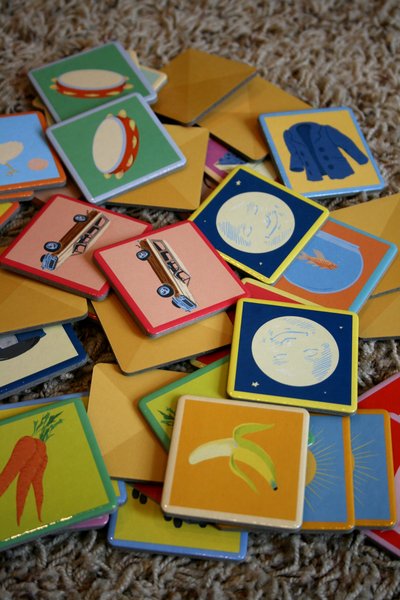My Ten Guidelines for Time

As I’ve been working on my 2013 goals ( read about my Simple. Quality. goals here) for almost a month now, I’ve done what most of us do in January: evaluate my use of time. People always ask me how I “do it all” or where I “find the time” and really, I don’t. I’m not exactly sure what “it” is, and I know that at the end of the day there’s still plenty of unfinished work at my house. As for “finding” time, I haven’t yet discovered the secret hiding place of extra time, but I have learned a few things about using the time I’ve been given, which is the same amount that everyone else has been given: 24 hours in a day. Truly, in that thing, the Lord made life absolutely fair.

As I’ve evaluated my use of time this month, I want to record a few guiding principles that help me use my time wisely. When I follow them, I end up feeling happier, more satisfied with my day, and I have a sense of being on target – all feelings I crave. So here are my 10 guiding principles for using the precious time I have:
1. Vision . I am a mother of eight children, ages 3 to 15. Life is incredibly intense at our house and it’s easy to be swept away by the noise, the clutter, the drama, whatever. All of a sudden the day is gone, the week is over, the month is a memory and we wonder if we did anything meaningful.
I need an enthusiastic vision of victory for my family.
My number one tool for preserving and developing this vision is to spend time reading every day from holy text.
I actually have several different things I read every morning, all of which draw me closer to God and remind me what really matters, giving me power to choose wisely throughout the day. I also find that this activity lessens my inclination to focus on “things” and increases my concern for people. Really, all my decisions hinge on this habit.
2. Stay home . I have learned that the fewer errands I run, the more time I have. I’ve also learned that little ones love being at home. They love having time to play, time to help, time to read stories – all things that are difficult to accomplish when we’re dashing here and there. It’s also easier to get the laundry done and the house clean and the books read when I’m home. Really, there’s an awful lot to do if I’m going to be ready to greet my six students when they come home from school, so those hours during the school day are important. I keep a list of errands to take care of and plan time to take care of them all at once, no more than once a week. If something must be taken care of sooner, I do it right before I pick up children from school, or during a violin lesson when I have 15 minutes to spare. Staying home gives me my best shot at tackling my to-do list. There’s an extra bonus that comes with staying home: it’s awfully easy not to spend money if you don’t go to the store!
3. The beauty of Enough.
Even when I stay home and work like crazy, I’ve learned it will never “all” get done, especially in a family like ours. I remind myself that if I’m not able to do everything I want to, I can do “enough.” I may not be caught up on the laundry, but I can do enough laundry that we’re all wearing clean clothes. I may not get the house completely clean, but I can clean it enough for my family to feel comfortable and relaxed when they’re here. As a perfectionist, learning the beauty of enough hasn’t been an easy lesson. Particularly when I’m running behind on life, I look at our family and ask myself “what would be enough here?” and then take care of the things that will be “enough” for us to function and move forward. There will be time enough for a spotless house when they’re all grown up. I want to savor this time, and so enough is often perfect. When I’ve done enough, that’s my signal to relax with them and enjoy being together.
4. Recognize and prepare for shifts . We all have shifts in our day. My two most intense shifts are the before school rush, and the after school hours. I’ve learned to save my best energy for the most intense times of day so I can offer my family my best self when they need it most. The before school shift requires me to get to bed on time. The after school hours require me to be completely present, organized, and focused. This means that I take care of my own needs earlier in the day. I tackle habit #1, Vision, right after they leave for school. That’s also when I exercise, take care of phone calls, emails, bills, etc. Then I move into the cooking, cleaning and tasks of keeping home. I spend some time with my youngest girls playing games, reading stories, working on the alphabet after lunch, and then tackle any projects I’m working on. But when the clock strikes 2 p.m. I have to stop everything, gather my thoughts, and shift focus to the busiest hours of the day.
5. The short list.
When my six students come home from school, they all have different homework assignments to tackle, instruments to practice, chores to do, and after school activities to attend. Just before they’re out of school, I make a “short list.” Next to each name I write the #1 priority for that child today and perhaps one or two additional things I don’t want to forget. Having this short list in hand helps me navigate all the things that come up, all the request that are made, and all the obligations we have without forgetting the most important things. My husband and I also schedule alarms on our phones to remind us of important conversations we need to have with various children. Without my short list I end up going to bed wishing I’d remembered this or that. It keeps me on track with the most important (but often not urgent) things. The short list also helps me mentally transition before I pick them up and gets me excited to have them all home.
6. Boundary leadership.
Years ago I read a powerful speech given by a man who has studied organizational behavior and leadership for many years. He spoke about studying leadership not from the perspective of one leading many, but of leadership moments that occur in transitional moments. The quote I saved says, “Like the green that grows in the cracks of a sidewalk, leadership usually springs to life between activities and at the edges of events” (Curtis LeBaron). I loved the terms he used to describe effective leaders as they build individuals in “boundary moments” and “face-to-face leadership.” Intrigued by these ideas, I began studying my own life to discover where I might uncover more opportunities to be a better leader as a mother. I quickly realized that most of the time my children spend with me will be “boundary moments” for them, and that these seemingly mundane moments were opportunities for “face-to-face leadership” in our home. Every time I have them in the car, or as we’re getting dinner on the table, or getting ready for school, or helping them with homework is a time when I have face-to-face opportunities with my children.
I am their boundary, the one that’s there on the edge at the beginning and ending of almost everything they’re doing. When I understood this, these times became more precious to me and I became more purposeful about how I spend them. For instance, I don’t make phone calls during these hours. I don’t spend time on any projects in the after school hours. I don’t sit down at the computer and if I do any housework I try to have at least one of my children helping me so I can talk with them. With this focus, I find I gain a lot of teaching/building time with my children.
7. Memorize something.
We all know the saying, “the days are long but the years are short.” There will always be more for me to do than I will get done. There will always be the tendency to think there will be more time in the future than there is now, and to assume that the life we live today will always be ours. I want to treasure this time. Every day I remind myself to memorize something, something that may be ordinary but which will one day change. It may be the curve of my three year old’s cheek, or the handwriting of my first grader, or the humor of my fifteen year old, or just the sight of all of us together at the dinner table. Whatever it is, I make myself hold still long enough to study it, notice it, appreciate it. As I’m doing it, I think, “Memorize this.” This habit helps me live in the present, appreciate what I have right now, and fills my heart with gratitude. Later that night I record what I memorized in my gratitude journal.
8. Create and protect “margin.”
Last year I read Richard Swenson’s fantastic book, Margin . My whole heart responded to the message of the book. In this ultra busy world, it’s easy to run faster than we have strength. We feel like we have to be productive every minute of the day. Eventually we all burn out if we don’t build time into our lives to recharge ourselves spiritually, mentally, physically, emotionally. Margin is having energy to spare at the end of the day, money in the bank at the end of the month. It’s the space between our obligations and our resources. We all need margin. We do a few things to preserve margin for our family: We eat dinner together every night. We read scripture together at the close of every day. Sunday is a sacred day at our house, a rest from the week’s schedule. We have a Family Home Evening every Monday night, an evening set aside for being together, learning, playing, building relationships. When we schedule activities, I try to protect one afternoon each week for my children to come home from school and just be kids. Margin is where we find time to serve others, time to work together as a family, time to really enjoy the simple goodness of life.
9. Limit media.
I find that most media falls into three categories: media that doesn’t support my values, media that is informational but makes me anxious (most of the news programs fall into this category), media that is beautiful and uplifting. I don’t need any of the media that doesn’t support my values, and a minimum dose of the media that gives me a stomach ache. I’ve also found that too much of the visual/social media (pinterest, blogs, etc.) can squash my own creativity, or even make me or my family feel like what we have isn’t good enough. So we don’t watch tv. I limit my time online, allowing myself 5 blogs at a time to browse, and limit my additional clicks. I don’t really “keep up” on things, and some would argue that I miss a lot, but I’m happier with less in this area. Small doses keep me energized by what’s out there, but helps me avoid getting sucked into anything that isn’t a priority. Limiting media also wins back time to devote to more meaningful things.
10. One drop at a time.
Not every day works out the way we’d like. Life erupts and schedules fall apart. There are too many days when I go to bed feeling like a failure. I hope you’ll read this post and spend your days putting drops of awesome in your bowl. None of us is the woman we dream of being, but we have moments – many of them – when we are. So let’s give ourselves credit for those moments by recognizing them for what they are, thus fueling ourselves with motivation to keep working at it. Life is too precious to waste our time on negative thoughts or feelings about ourselves or our performance – even in our slow middles . The more I train myself to treasure the positive and move on, the more time I have to actually become the woman and mother I dream of being.
These ten principles, when lived, bless my life. They bring beauty, meaning and purpose to the things I do and help me feel like I have been a good steward of the time God has given me. They help me focus on creating a beautiful family culture which will help every member of our family reach their potential and grow in goodness.
Lest I appear to have it all figured out, let me share how today went. I came home from taking everyone to school, and spent an unexpected hour shovelling snow off my driveway. Then my five year old started throwing up and my three year old decided to be grouchy (to make sure she got her share of attention, I guess?). Both of them wanted me nearby, so the laundry didn’t get done, the fridge didn’t get cleaned out, dinner didn’t get prepped. I didn’t make a short list today. My carpet is cluttered with all the things I try to have cleaned up before the clock strikes two. The school drop off and pick up trips both took twice as long as usual due to the snow, making us late to piano lessons. My toddler stole her sister’s chapstick and smeared it all over her eyebrows. Interesting day to write about how I use my time! And yet, it wasn’t so bad. I memorized the sound of my daughter’s breathing as she slept on my lap, noticed the beauty of the falling snow, put a pot of cranberry cider on the stove for us to enjoy. Drops of awesome! In the end it’s not about whether we meet our expectations every day or not. It’s about the direction we’re headed and our determination to try it all again tomorrow. And doing it with love. Oh, how the blessings flow if we never stop trying!
Jennifer Linking here



